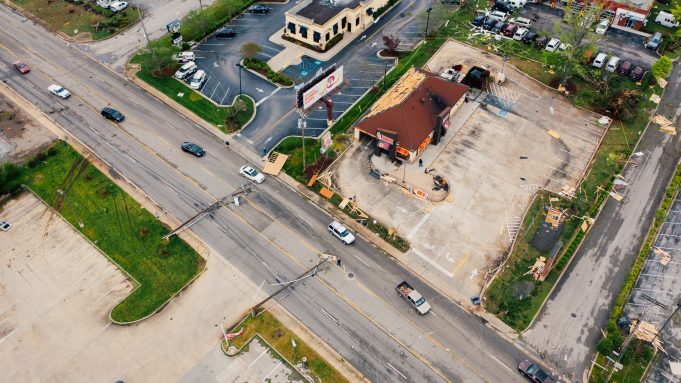Despite being renowned for having a temperate climate, the United Kingdom receives a hoard of unpleasant weather during the colder months. From rain, wind, snow, and storms, the severity and frequency of the bad weather that the UK faces are unpredictable.
But often, many UK homeowners suffer property damage due to these storms causing the average cost of storm damage claims to rise to a whopping £1,011. Although there isn’t much you can do to eliminate storm damage completely; there are several steps you can take to protect your home.
From keeping your guttering clear to ensuring that your soil is graded so that water can flow away from your home, we list several ways that you can protect your home from storm damage below:
Check Your Home Insurance Policy
Most home insurance policies will cover your home and its contents, which should be adequate coverage in the chances that your home is affected by storm damage. However, it is always advisable to review your cover regularly to ensure that it is up-to-date and hasn’t expired.
Additionally, suppose you’ve made significant renovations or improvements since purchasing your original policy. In that case, it is worth ensuring that your policy will cover the cost of rebuilding the entirety of your property, not just its market value, using home insurance comparison sites.
You can use home insurance comparison sites like Quotezone to take advantage of free price comparisons to get the best deals on financial service products like car insurance, landlord insurance, taxi insurance, and more. This can help existing or new policyholders. Consider visiting their site to use their comparison tool and see how they could help you get better home insurance today.
Re-Grade Your Soil
Outside your property, the ground should naturally incline as it approaches or touches the foundation wall. Providing that your soil is inclined will keep water from pooling and instead move across the top of the earth, preventing excess water from gaining access to your property through the basement floor or the foundations. If this is not the case with your soil, you should consider re-grading and packing it so that any excess water caused by storms will move across the earth instead of soaking down into it.
Check Your Fence Posts
Anything that isn’t nailed down during a storm can quickly become a problem. Loose fence posts or unstable tree branches can soon become dislodged during storms and cause damage to your home, vehicle, or neighbouring property. Therefore, whenever a storm is forecasted, you must check that all your fence posts are secure by giving them a good shake to check that none are loose.
Replace Missing Or Damaged Roof Tiles
Like fence posts, if a roof tile is damaged, it is more likely to break free. On the other hand, if it’s missing, the likelihood of the storm doing more damage increases as the wind can get underneath the gap and cause more problems. Ensure that you replace any missing or damaged tiles before the scheduled storm passes through and that they are nailed in properly to avoid them falling off again.














